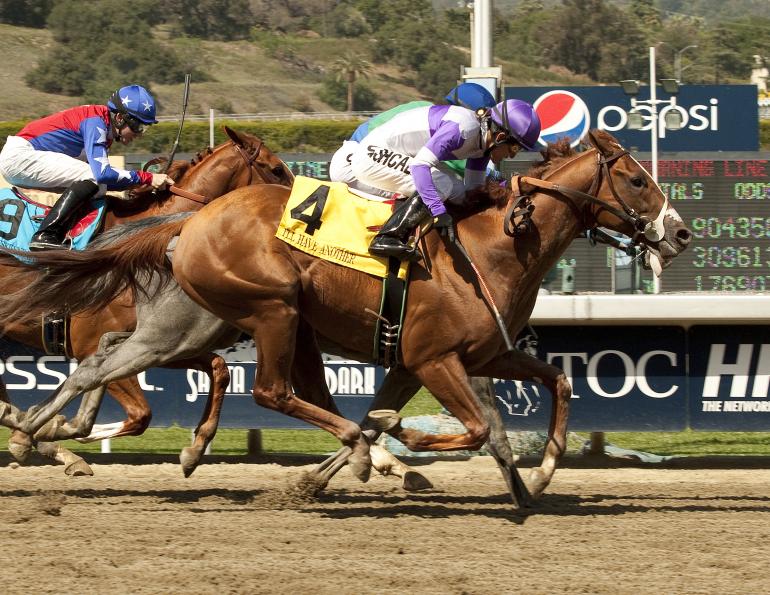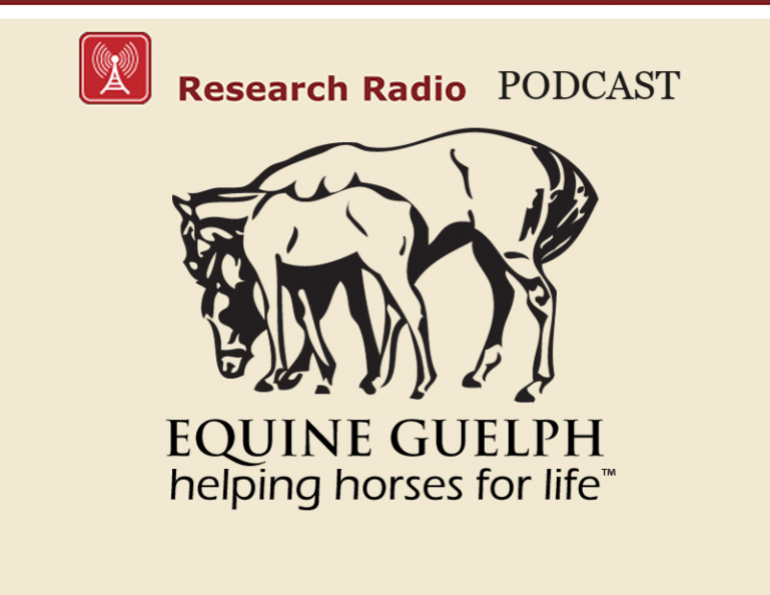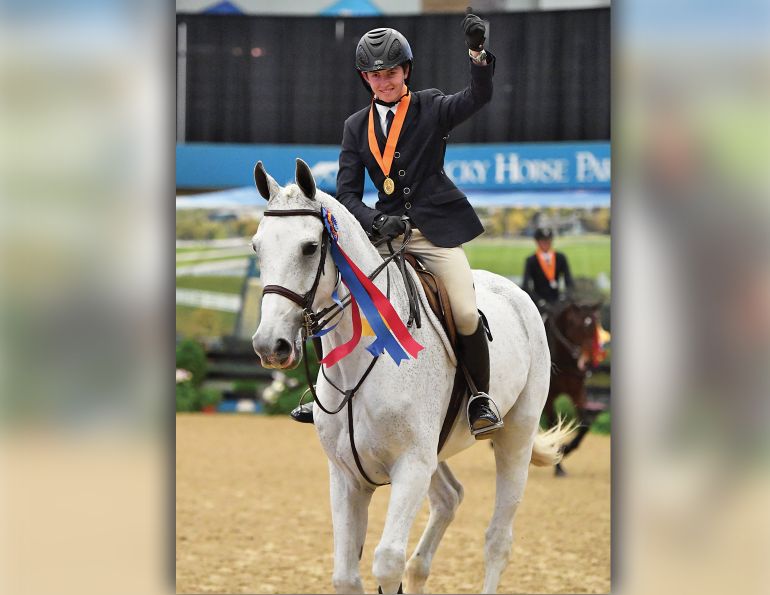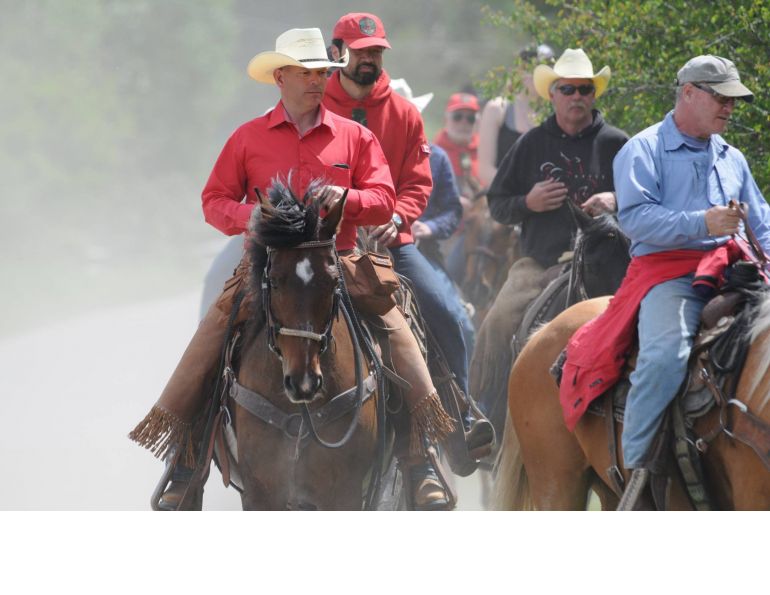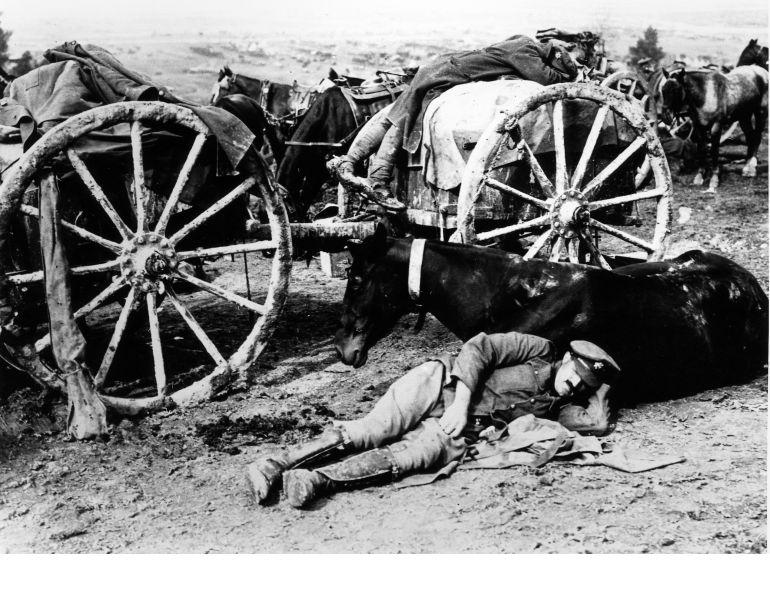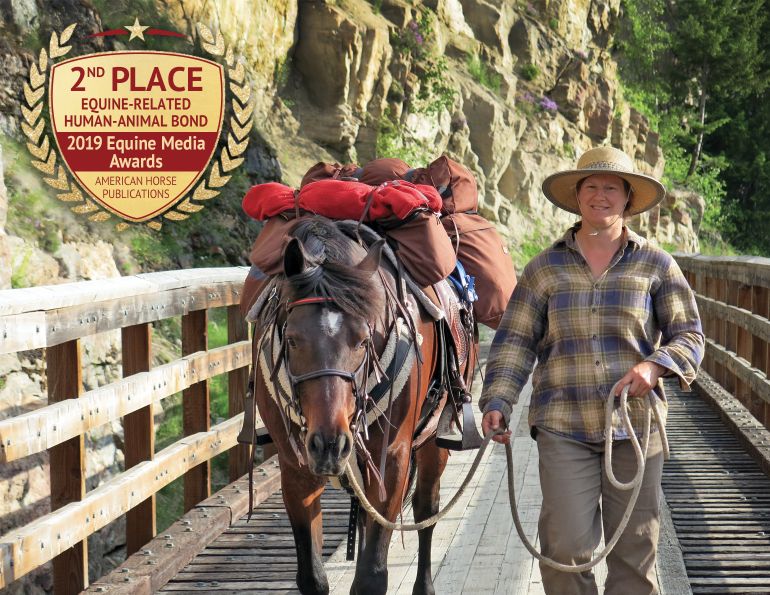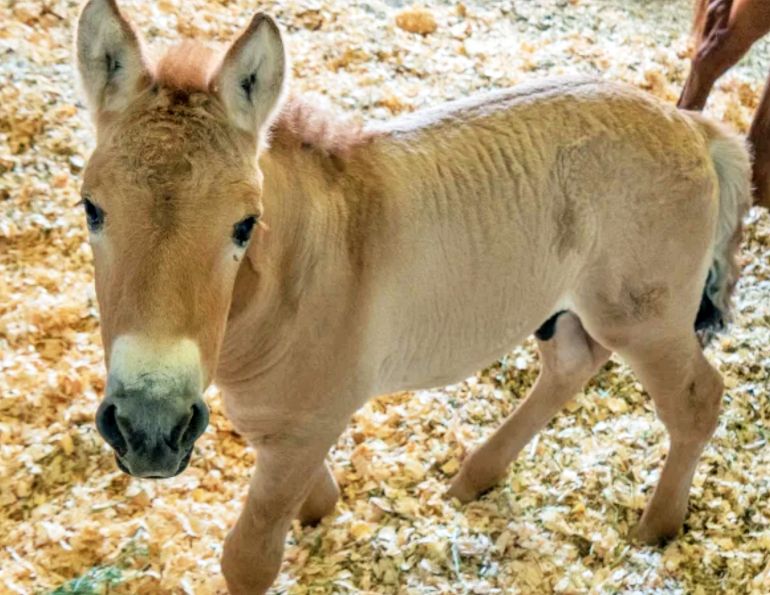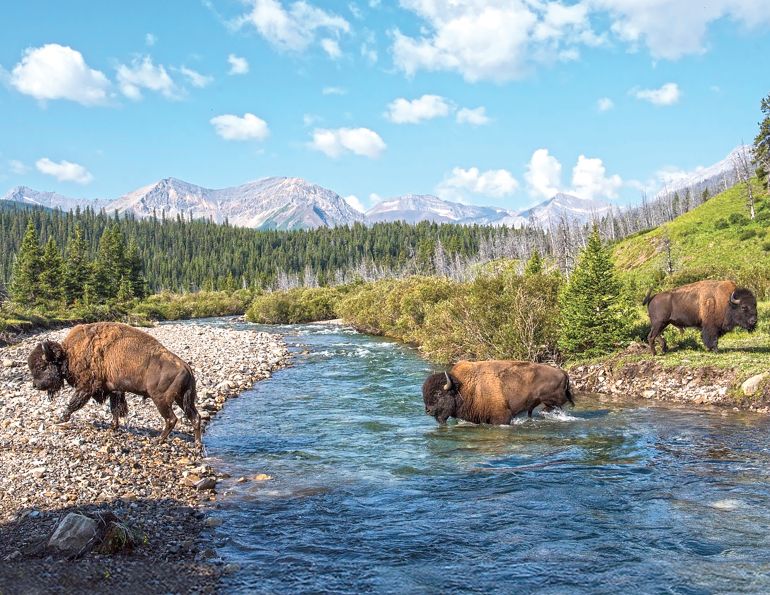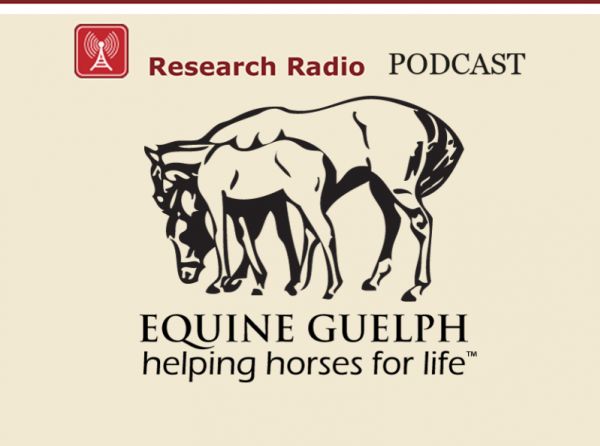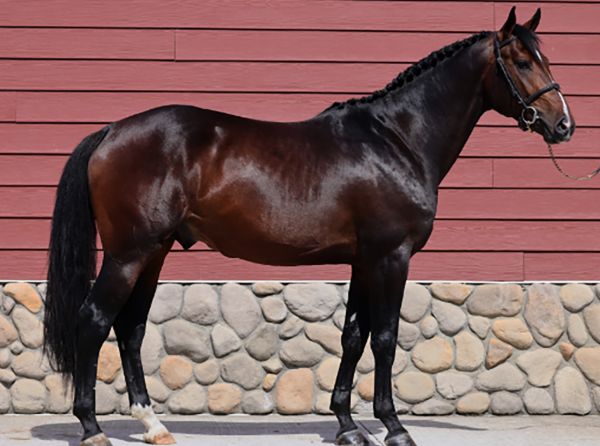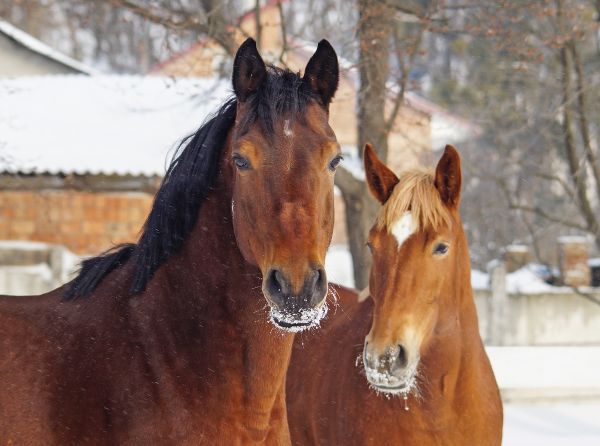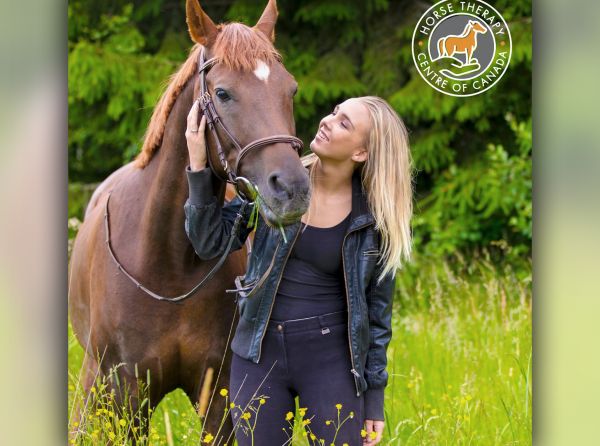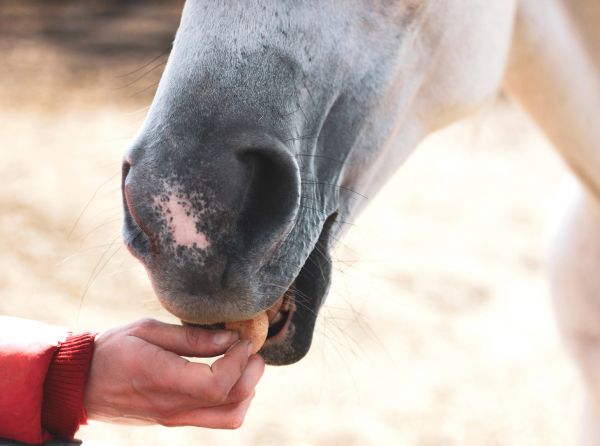By Margaret Evans
That golden moment when I’ll Have Another owned by Canadian businessman J. Paul Reddam, trained by Doug O’Neill, and ridden by Mexican-born Canadian jockey Mario Gutierrez slipped by favourite Bodemeister ridden by Mike Smith to win the 137th Preakness Stakes by a neck on May 20, 2012, mere weeks after victory in the Kentucky Derby, was one of those breathtaking thrills that hallmarks the stunning unpredictability of horse racing.
Similarly unpredictable though was the disappointing news that came three weeks later, just one day before the Belmont Stakes, when O’Neill announced that a leg injury would prevent I’ll Have Another from running in the third leg of the Triple Crown.
But while he was not able to secure horse racing’s highest honour and be named Triple Crown champion, there’s no denying that the three-year-old chestnut colt’s genes have “win” all over them.
His sire is chestnut stallion Flower Alley, foaled in 2002 in Kentucky, the same state where I’ll Have Another was bred. Out of fourteen starts, Flower Alley had five wins, three seconds and placed third once. He ended his racing career with winnings totalling $2,533,910. The dam of I’ll Have Another is Arch’s Gal Edith. She also foaled in 2002 and won her only race as a three-year-old at Belmont Park.
What makes I’ll Have Another’s pedigree curiously special and where the genetics for speed seem to have really aligned in his case is that he has the dual heritage of legendary Canadian-bred stallion Northern Dancer (1961-1990), who features twice on his sire line and once on his dam’s line.
During his racing career, Northern Dancer had 18 starts (14 wins, two seconds, two third place finishes), and like his great-great-great grandson, he also won the Kentucky Derby and the Preakness Stakes.
But it was his life at stud that made his name immortal. He was leading sire in the U.S. in 1971 and 1977, and leading sire in the U.K. in 1970, 1977, 1983, and 1984. He was leading broodmare sire in 1991. He became the most influential stallion in the history of the breeding industry and his progeny has earned over $31 million in race winnings. Northern Dancer had speed and he disseminated that speed gene into his descendants. But where did this speed gene come from?
Perhaps a little Shetland mare.
According to a press release from the University College Dublin, in Ireland, “Scientists have traced the origin of the ‘speed gene’ in Thoroughbred racehorses back to a single British mare that lived in the United Kingdom around 300 years ago, according to findings published in the scientific journal Nature Communications.”
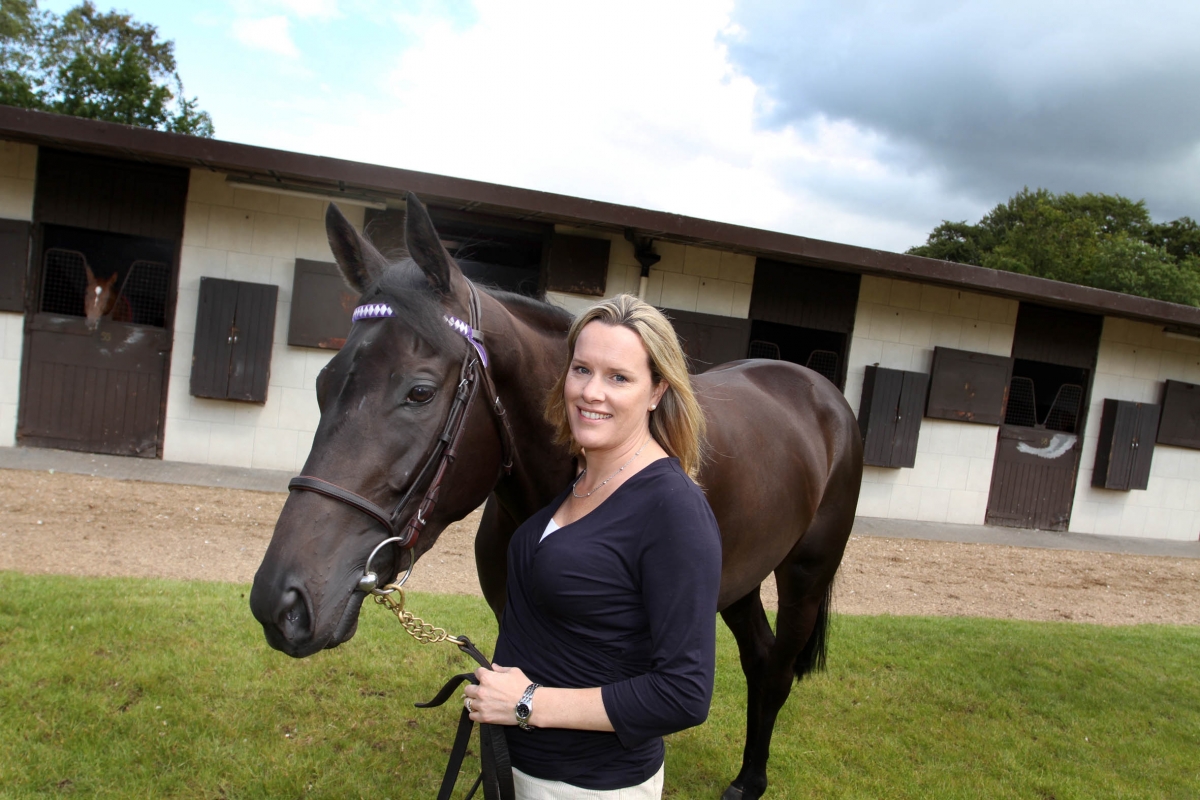
Photo: Courtesy of University College Dublin - Dr. Emmeline Hill, genomics scientist at the School of Agriculture and Food Science, University College Dublin, is the senior author of the "speed gene" study.
Scientists analyzed DNA from 593 horses representing 22 Eurasian and North American horse populations, museum specimens (mandible, tooth or bone) from 12 historically celebrated thoroughbred stallions (i.e., Bend Or, Eclipse, Hyperion, Persimmon, William the Third, and others) that lived during the period spanning from 1764 to 1930, 330 elite performance thoroughbreds living today, and 42 samples from three other equid species including asses, zebras, and wild horses. From the analyses they traced the origin of the “speed gene” to a C type myostatin gene variant.
The press release explained that the myostatin gene is central to the control of muscle mass development in many species. There is the T type gene variant and the C type gene variant and in thoroughbreds the profile of these gene type variants in each individual horse is indicative of the racing distance it is best suited to. The T type is linked in thoroughbreds to greater stamina for longer distances while the C type is better suited to short distance (less than 1600 metres), sprint races. In the asses and zebras studied, only the T type myostatin gene variant was present which points to the probability that this was the ancestral wild gene type.
In analyzing the DNA of the historical thoroughbreds from the 18th to the early 20th centuries, all of them had two copies of the T type speed gene variant (T:T) linked to stamina. This makes sense since racing in the 1700s and 1800s was hugely different from today. In the past, two horses raced two to four miles during multiple heats until one clearly distanced itself from the other to win the event. Not until two-year-old racing became popular with shorter distances and a bigger field did horses with the C type gene variant shine with their brilliant sprinting. It is this C type gene variant that has been traced back to that one little mare.
“The single mare thought to have been responsible for introducing the speed gene may have been a British native horse,” said Dr. Emmeline Hill, genomics scientist at the School of Agriculture and Food Science, University College Dublin, and senior author of the “speed gene” study. “Many native breeds are now extinct but they shared their genetic make-up with some of the hardy pony types that survive today, such as the Dartmoor and Shetland. Our results strongly suggest that the speed variant (C) of myostatin entered the thoroughbred gene pool only once, around 300 years ago, and is likely to have come from a British native mare – perhaps one of the strong and stocky breeds of mountain and moorland ponies that thrived in the tough setting of Northern England and Scotland. This inference comes from the data that shows that the highest frequency of the C type gene variant among all the horses whose DNA we screened was among the population of Shetlands. The Shetland represents just one of many local British horse types, which, according to historical sources, were highly prized for their racing ability before the thoroughbred was formally established. We’re not suggesting that Shetlands were speedy in themselves but rather that their genes, that are shared with ancestral populations, have made a key contribution to the thoroughbred.”
Hill added in the press release that the original speed gene variant entered the thoroughbred from a single mare at a time when local British horse types were the most popular race horses before the development of the thoroughbred breed which occurred with the introduction of Arabian bloodlines. Of those British horse types, the research showed that the Shetland breed had the highest frequency of the C type gene variant. They determined that the Shetland speed gene entered the thoroughbred only once by comparing the diversity of the chromosomes around the C and T type gene variants. There was only one C type compared to 11 different T type gene variants, meaning the C type gene variant entered the thoroughbred breed just once. And where that came from is lost in time.
“The C variant would have emerged as a natural mutational event at some point in the past,” said Hill. “We identified it in a number of other central Asian breeds, but at low frequency and rarely in the homozygous (two copies, CC) state. The opportunity to come to high frequency would likely have arisen as a result of selection by breeders for the trait in question.”
“In the last few years, we have seen an enormous appetite for this novel genetic information,” said Hill, who co-founded Equinome, a university spin-out company. “Equinome provides the Speed Gene Test as a commercial test for owners and breeders. We currently have clients in all of the major bloodstock regions of the world. The information is being used to fine tune training and racing strategies and to optimize breeding and selection decisions. The test is unique in that is it based on peer-reviewed published and validated scientific research.”
In analysing the modern day expansion of the original speed gene, the international scientific team, which included researchers from the University of Cambridge and Equinome Ltd, were able to trace all the modern variants to Northern Dancer’s sire, Nearctic (1954-1973), a multiple stakes winner (47 starts, 21 firsts, 5 seconds, 3 thirds). An expansion of those genetic variants was subsequently traced to Northern Dancer himself, and no one who watched this year’s Derby and Preakness will deny that I’ll Have Another has inherited the speed gene.
“We will never know the exact identity of the mare that introduced the C-type variant but the project has shown us that the British native breeds were responsible in many ways for the outstanding racing ability of the thoroughbred,” said Hill.
Given the enormous practical value of this genetic research, it’s logical that thoroughbred breeders will be equating the speed gene factor into their broodmare programs. As much as the environment, management, and training are central in the development of a race horse, more and more breeders and owners are recognizing and embracing the importance of genetics and its influence on performance.
Main photo: Benoit Photo - I'll Have Another is descended from legendary racehorse Nearctic, whose DNA contains all modern variants of the "speed gene."



